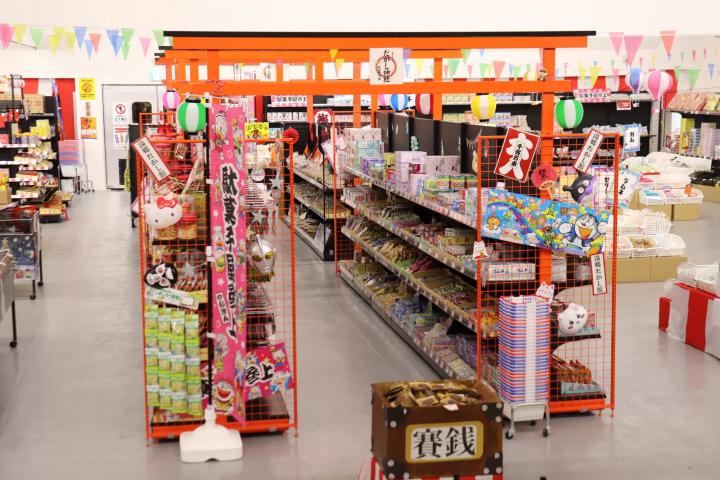What is a shrine torii gate? Explaining its origins and types

When you visit a shrine, you will see a torii gate at the entrance. If you look closely, you will notice that the shape and color of the torii gate vary depending on the shrine. But what purpose are torii gates built for in the first place? In this article, we will explain in detail the origins and types of torii gates.
What is a Shrine Torii?

Torii gates are not only used as gates leading to shrines and as symbols, but also represent the boundary between the sacred area inside the shrine (the sacred precincts) and the outside world (the secular world) where people live. In addition, torii gates are said to play a role as a "barrier" that prevents impurities from entering the shrine.
Generally, each shrine has one torii gate, but at larger shrines it is not uncommon to see multiple torii gates lined up.
What is the origin of torii gates?
There are several theories about the origin of torii gates, but one of them comes from a myth in the Kojiki, which tells of an episode in which Amaterasu Omikami hid herself in the Heavenly Cave and other gods made a bird called the "Tokoyonaga Nakidori" sing, and this theory states that the torii gate originated from the "tree where the bird lived."
There is also a theory that it was introduced from overseas, such as India or China.
Types of Torii
Torii gates come in a variety of materials, shapes, and colors, but can be broadly divided into two types: "Shinmei Torii" and "Myojin Torii." If you further subdivide these by shrine and shape, it is said that there are over 60 types.
Shinmei Torii

Myojin Torii

The Myojin Torii are characterized by the fact that both ends of the Kasagi (pillar) curve up towards the sky, with a Shimagi (wooden beam) placed underneath. The name of the shrine is written on the central frame, giving them a stronger and more gorgeous feel compared to Shinmei Torii. Torii gates painted vermilion are primarily classified as Myojin Torii.
Why are torii gates red?
One theory about why torii gates are red is that in ancient Japan, vermilion was believed to have the power to ward off evil. Vermilion was also thought of as a symbol of vitality, as it is reminiscent of the color of blood flowing through the body. For these reasons, it may have come to be used in sacred places such as shrines, as a color that wards off impurities and brings power.
However, not all torii gates are vermilion; there are also white and black torii gates.
Major shrines that can be visited along the Nankai Line
Finally, we will introduce the main shrines that you can visit along the Nankai Line.
Sumiyoshi Taisha Shrine

This is the head shrine of Sumiyoshi Shrine, which has about 2,300 branches nationwide. It is known as "Sumiyossan" in Osaka, and has been loved for a long time. It is also famous nationwide, with more than 2.3 million visitors at the beginning of the year.
DATA
Business hours: 9:00-17:00 (amulet gift shop)
TEL: 06-6672-0753
Address: 2-9-89 Sumiyoshi, Sumiyoshi-ku, Osaka City, Osaka Prefecture
Access: 3 minutes on foot from Sumiyoshi-Taisha Station on the Nankai Main Line
About 5 minutes walk from Sumiyoshi-Higashi Station on the Nankai Koya Line
A short walk from the Sumiyoshi Torii-mae tram stop on the Hankai Tram Line
Hochigai Shrine

Located on the border between the three provinces of Settsu, Kawachi, and Izumi, this shrine is said to be a "clear place without direction." It is worshiped as a god who protects against misfortunes due to direction.
DATA
Business hours: 9:00-16:00 (prayer reception hours)
Address: 2-2-1 Kitamikunigaokacho, Sakai-ku, Sakai-shi, Osaka
Access: 5 minutes on foot from Sakai-Higashi Station on the Nankai Koya Line
Imamiya Ebisu Shrine

This shrine enshrines Ebisu, the god of prosperity in business. The Toka Ebisu festival, held for three days from January 9th to 11th every year, is a very lively event, attracting approximately one million worshippers every year.
DATA
Business hours: 9:00-17:00
TEL: 06-6643-0150
Address: 1-6-10 Ebisu Nishi, Naniwa-ku, Osaka City, Osaka Prefecture
Access: 2 minutes on foot from Imamiya Ebisu Station on the Nankai Koya Line
Mozu Hachiman Shrine

This is a historic shrine that is said to have been founded during the reign of Emperor Kinmei during the Yamato period. The main shrine building is one of the largest in the prefecture. Here, you can draw a "Haniwa Fortune" (initial offering fee 1,000 yen) in a cute container that resembles a haniwa. In addition, the "Moon Viewing Festival" held every year around the harvest moon on August 15th of the lunar calendar is famous, and the spectacular "Futon Taiko Dedication Ceremony" is worth seeing.
DATA
Business hours: 9:00-16:30
TEL: 072-252-1089
Address: 5-706 Akahatacho, Mozu, Kita-ku, Sakai City, Osaka Prefecture
Access: 10 minutes on foot from Mozu-Hachiman Station on the Nankai Koya Line
Mount Kongo Katsuragi Shrine

This shrine is located near the summit of Mount Kongo, which runs across the border between Osaka and Nara prefectures. Currently, 38 Kuzuki shrines, the guardian deities of Mount Kongo, are enshrined here. Mount Kongo has long been considered a sacred mountain where Shinto and Buddhism are fused and harmonized.
DATA
TEL: 0721-74-0005
Address: 1009-2 Chihaya, Chihayaakasaka Village, Minamikawachi District, Osaka Prefecture
Access: Take the bus from Kawachinagano Station on the Nankai Koya Line to Kongo Tozanguchi bus stop, then walk for about 70 minutes
Be sure to pay attention to the differences in the torii gates as you visit!

This time, we explained about the torii gates of shrines. Torii gates have been familiar in Japan since ancient times, but you can see that they contain various meanings and thoughts. If you know the meanings before you visit a shrine, your visit will surely be more meaningful.
Next time you go out, why not visit a shrine along the Nankai line? You might discover something new.
Original article: https://otent-nankai.jp/category/topic/230227_shrine-torii-gate_873
[Where tradition meets modernity] We will spread the appeal of Wakayama and Osaka to the world. HP: https://www.japanrootsguide.com/jp Let's travel Japan together and create inspiring stories and unforgettable experiences. From the tranquil temples and shrines of Wakayama and the soothing green mountains to the vibrant city and delicious food of Osaka, We will deliver the charm of this place to you in full detail. Let's join us and enjoy the beauty of Japan. "This account is operated by Nankai Electric Railway Co., Ltd." [Photo description] 1. Rapi:t Express Train Connecting Kansai International Airport and Namba 2. Nachi Falls and the Mie Pagoda of Seiganto-ji Temple (Photo courtesy of the Wakayama Prefecture Tourism Federation)
The contents on this page may partially contain automatic translation.






























